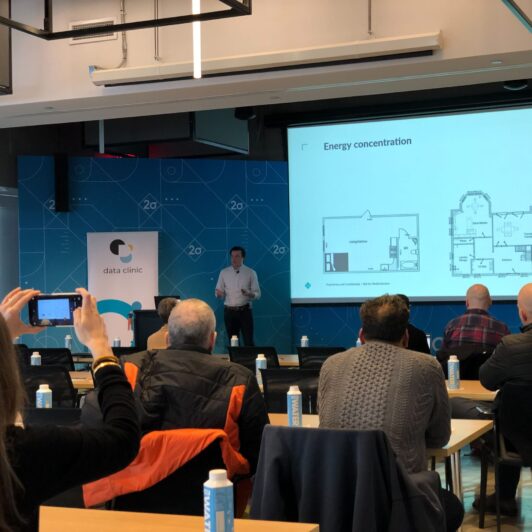Decentralized Finance has gone mainstream. It seems like you can’t go anywhere these days without hearing about this movement in the Web3 ecosystem. Recently, there’s been a new buzzy category of projects that is building on this momentum being referred to as “DeFi 2.0.”
DeFi 2.0 refers to a new, “second-generation” of DeFi protocols that are addressing many of the challenges that foundational DeFi primitives have presented. The definition of this space is still fuzzy, and will evolve quickly like everything in the Web3 world. However, there are few foundational concepts driving this narrative which are solidifying as key drivers of the ecosystem.
Liquidity Efficiency
In the context of DeFi 2.0, liquidity efficiency is focused on improving the methodology by which protocols are able to generate liquidity in their ecosystem. Early DeFi protocols, such as Compound, pioneered the concept of liquidity mining in the form that is broadly used today. In this model, protocols incentivize ecosystem participants with their native token to use the product, or act as a liquidity provider, in the hopes of rapidly bootstrapping growth and generating a sustainable engine to carry the project to the moon.
Liquidity mining is one of the most controversial experiments in bootstrapping growth. On one hand, it is one of the most wildly successful ways to get participants to come to a protocol. On the other hand, it has the unintended consequence of flooding the protocol with mercenary capital that does not stay on protocol. To put this in Web2 terms, liquidity mining is an incredibly powerful user acquisition strategy, but rarely translates to lasting user retention.

Mercenary capital creates an unsustainable cycle. An often cited example of this phenomenon is what happened to Big Data Protocol, which amassed ~10% of TVL in the DeFi ecosystem over one weekend and quickly fell to near zero levels of activity, according to DeBank. When protocols employ this strategy, the total value locked in the project rises, while the incentive to dump the native token also increases as the price rises, which creates the need to promote more token incentives to keep the mercenaries at bay. DeFi 2.0 projects are finding ways to break this cycle, and to find a more efficient alternative to generating liquidity for a project.

We are in the very early stages of projects coming to mainnet in this space. There are varying approaches to solving this problem, with a few notable projects mentioned below. It is important to note that this is not an exhaustive list, but meant to be illustrative of the new approaches emerging in the ecosystem.

Capital Efficiency
Capital efficiency is another major theme emerging in the context of DeFi 2.0. Foundational DeFi projects have been able to aggregate an enormous amount of capital (>$113B at the time of this writing) in an incredibly short period of time. Beyond locking capital, a new wave of projects are focused on ensuring this locked capital is fully utilized.
Capital inefficiency manifests itself in a number of ways throughout the ecosystem. For example, in lending protocols not all of the capital locked is actually being lent (see below). Additionally, users who are taking out loans have to post large amounts of collateral, locking up value that could be utilized elsewhere in the ecosystem. Even with staking, users lock up capital to generate yield but cannot access the underlying value of their staked assets for other purposes.

There is an exciting new category of projects emerging seeking to address the capital inefficiencies that exist in the market today. I’ve noted a few below, but again should highlight that this is not meant to be an exhaustive representation of the activity in this space.
- Liquid Staking – a few different projects, such as Lido, are building a “liquid staking” concept that provides protocol participants with a derivative of the staked asset (e.g., SOL → sSOL) that allows for the asset to continue generating yield, while also providing the user a token that can be used for other purposes such as increased leverage, or as collateral for a loan.
- Undercollateralized Loans – lending protocols have become the dominant use case in DeFi today. However, most DeFi lending applications require borrowers to over-collateralize their loans. We are seeing many projects focused on reducing the amount of collateral needed to borrow from lending platform aggregators such as JellyFi, to primitives that enable credit ratings for borrowers such as spectral.finance.
What does DeFi 2.0 mean for the crypto ecosystem, and where does it go from here?
Beyond liquidity, DeFi 2.0 also represents iteration. Entrepreneurs are experimenting with proven models that have succeeded in the past few years and building an entirely new layer of applications that will usher in a new phase of ecosystem growth. There are many implications for this evolution, a few of which I’ve noted below.
- Cambrian explosion of innovative protocols can be expected to lead to a massive expansion of the DeFi ecosystem – 2020’s DeFi summer laid down the foundational primitives for a new generation of entrepreneurs to build. DeFi 2.0 represents a cambrian explosion in innovative projects that tweak the proven projects of DeFi 1.0 and can be expected to result in a boom which could far exceed what we’ve seen to date. Today, there is approximately ~$100B in TVL within the DeFi ecosystem, and over the next 3-5 years the space has the potential to grow beyond ~$1T in TVL .
- Decentralized finance really gets decentralized – Centralized actors still play a massive role in the viability and stability in key building blocks of the DeFi ecosystem. Stablecoins, such as USDC for example, are often backed with reserves that are reliant on assets minted by centralized entities. Abracadabra Money and their $MIM token is an excellent example of a DeFi 2.0 project that is partly focused on creating a stablecoin untethered from any sovereign / centralized currency.
- From the crypto native to the crypto curious – We are seeing projects leveraging the composability of DeFi primitives to build products that are easier to understand and access for individuals excited about crypto, but do not have the time or context to take the plunge. Ribbon Finance, for example, makes it easier for a typical participant to execute more sophisticated trading strategies using their vaults.
- Institutional investors enter the DeFi space – The interest in DeFi has largely been driven by speculative retail investors. However, the next phase of DeFi is likely to bring on a new category of institutional investors who are interested in the superior yields we are seeing today, as well as a range of new products targeted for their risk profile. For example, Element Finance is working on a fixed-rate product that should be more attractive to institutional investors that value stability. Alongside this institutional interest, I expect there will be a range of building blocks that will emerge, such as KYC and compliance rails, to address the pain points that are particularly important for these investors.
The emergence of Decentralized Finance has created a movement that will challenge many of the existing financial and social institutions of our time. DeFi 2.0 represents an evolution of this movement that will continue to build towards this exciting future. If you are an entrepreneur building a project in the DeFi ecosystem we would welcome the chance to speak and collaborate with you.






